Ford Mustang (1999-2004) Service Manual: Halfshaft Joint
Special Tool(s)
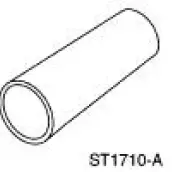 |
Driver 205-199 (T83T-3132-A1) |
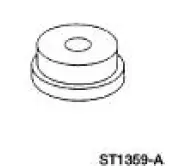 |
Hub Bearing Cup Replacer 205-147 (T80T-4000-P) |
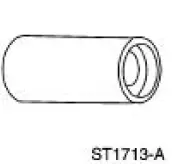 |
Sensing Ring Replacer 206-041 (T89P-20202-A) |
Disassembly
1. CAUTION: Do not disassemble the halfshaft assembly. Install a new assembly if worn or damaged.
Remove the halfshaft from the vehicle. For additional information, refer to Halfshaft in this section.
2. If necessary, remove the dust seal assembly (2217).
1. Tap uniformly around the dust seal assembly.
2. Slide the dust seal assembly from the shaft.
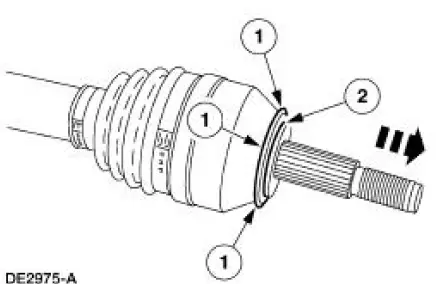
3. Using a suitable bearing plate and a press, remove the rear brake anti-lock sensor indicator, if necessary.
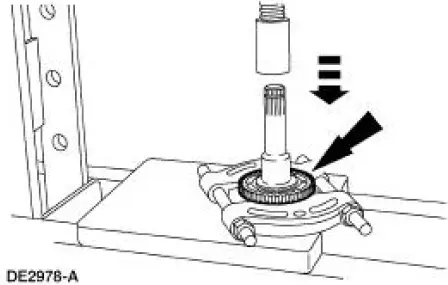
Assembly
1. Using the special tool and a hammer, install the new dust seal assembly, if removed.
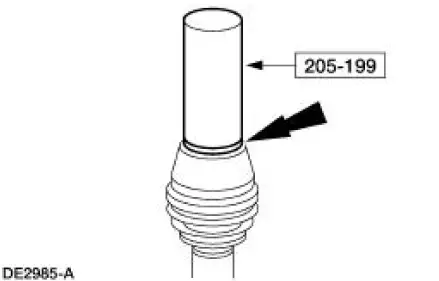
2. CAUTION: Place only the inboard CV joint outer race land on the bearing plate. Do not press against any other portion of the outer race or damage will occur.
If removed, using the special tools, the bearing plate and a suitable press, seat the rear brake anti-lock sensor indicator against the inboard CV joint housing.
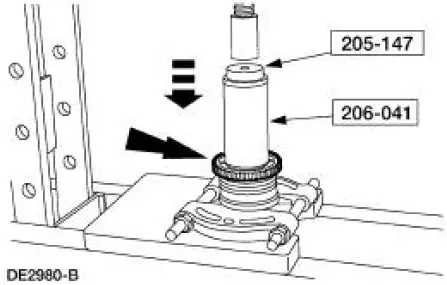
3. Install the halfshaft in the vehicle. For additional information, refer to Halfshaft in this section.
 Installation
Installation
1. NOTE: This procedure applies to both the LH and RH halfshafts.
Install a new driveshaft bearing retainer circlip.
2. Remove the special tool.
3. CAUTION: Differential seal damage will occur if i ...
 Brake System
Brake System
...
Other materials:
Speakers
Torque Specifications
Speakers
NOTE: Premium sound speakers (18808) are labeled with either 6
OHMS or 8 OHMS.
The coupe has a four-speaker system, with two door-mounted
speakers and two in the package
tray panel (46506).
On the convertibl ...
Connecting Rod - Bearing Journal Clearance
Special Tool(s)
Plastigage
303-D031 (D81L-6002-B) or
equivalent
NOTE: The crankshaft connecting rod journals must be within
specifications to check the connecting
rod bearing journal clearance.
1. Remove the connecting rod bearing cap.
2. ...
Changing the vehicle battery
WARNING: Batteries normally produce explosive gases which
can cause personal injury. Therefore, do not allow flames, sparks
or lighted substances to come near the battery. When working near the
battery, always shield your face and protect your eyes. Always pro ...
